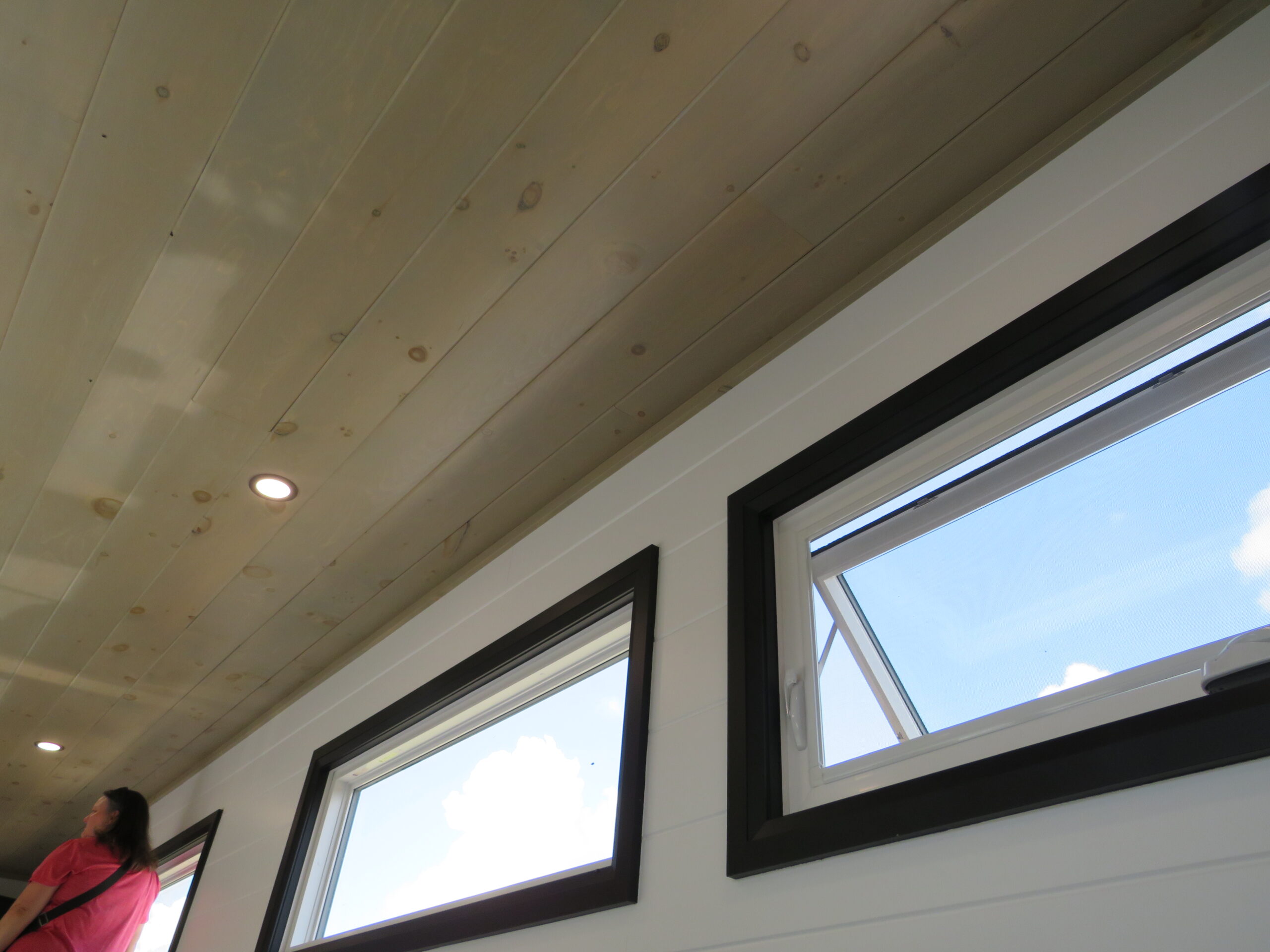
Tiny Homes Window Replacement in 2023 – Checklist on window replacement for Tiny homes
Replacing the windows in your tiny home can significantly impact its energy efficiency, overall value, and even aesthetics. However, the window replacement cost can vary widely, depending on several factors.
In this article, we will break down the key elements that influence the cost of replacement windows for tiny homes and provide tips on getting the best deal.
Different Window Styles
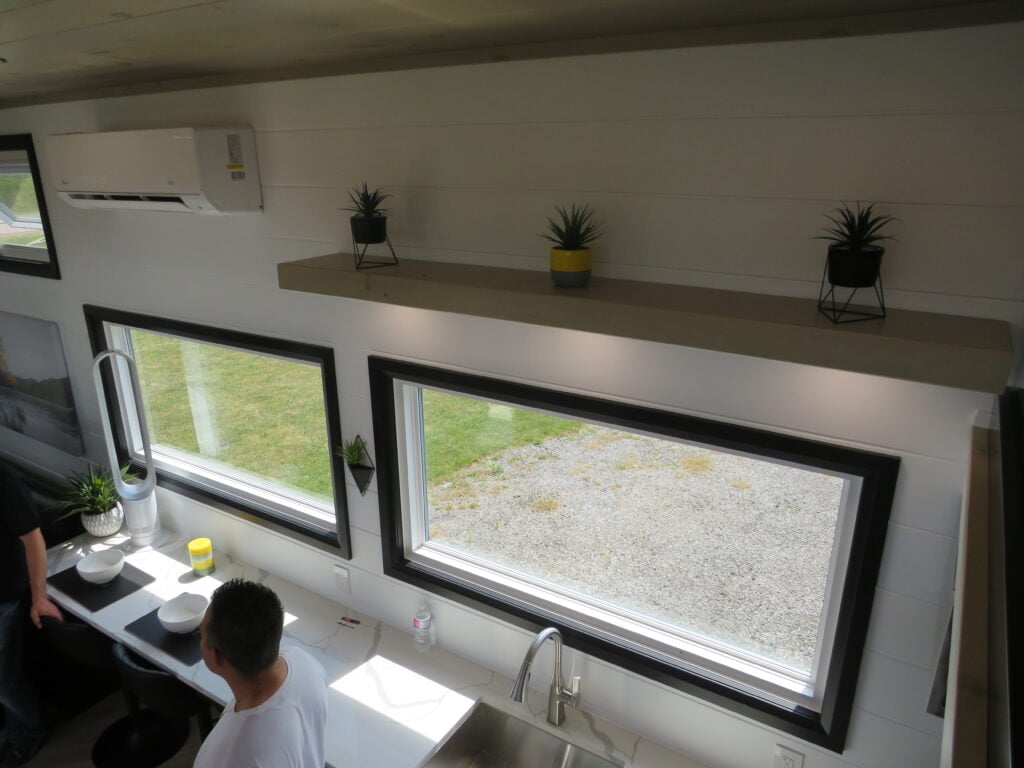
Just like regular residential replacements, the window style for your tiny house is the primary factor determining the entire project’s price. Different window styles come with different price tags.
For instance, analyzing Ecoline Windows reviews we can conclude that:
- Casement windows or awning windows are typically the most affordable option for tiny homes, with an average price of $400 per unit.
- Sliding or picture windows are generally more expensive, with prices revolving around $540-650 per unit.
- Double-hung windows are vertical type of windows that are best installed for bathrooms or 2nd story bedrooms. Their cost is usually around $520 per unit.
- Bay windows are the best windows to let lots of natural light to your home. They are usually combination units that are equipped with tempered glass. The price range here is a bit higher starting from $800 per replacement.
Standard or Custom Window Sizes
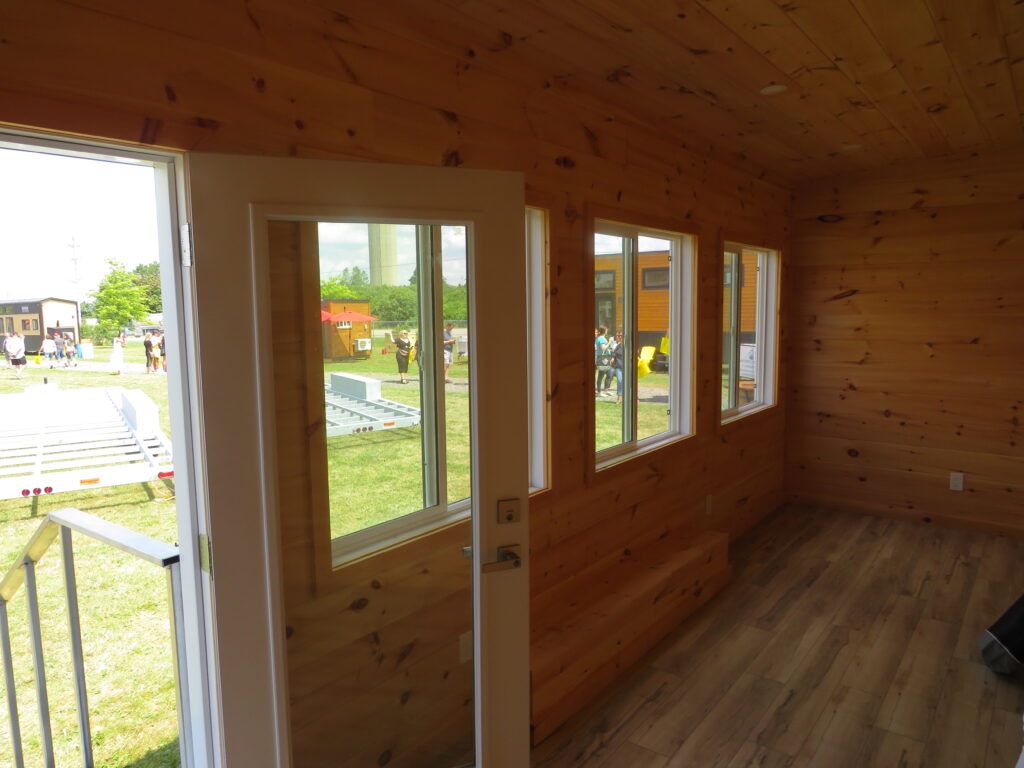
The size of the windows you want to replace will also impact the final cost of your project. Tiny homes typically have smaller windows than regular homes, so the cost may be lower overall. However, custom windows will still be more expensive than standard sizes. Keep in mind that enlarging the window opening to accommodate a larger unit will add to the installation costs, making the process more complex.
Type of Glass
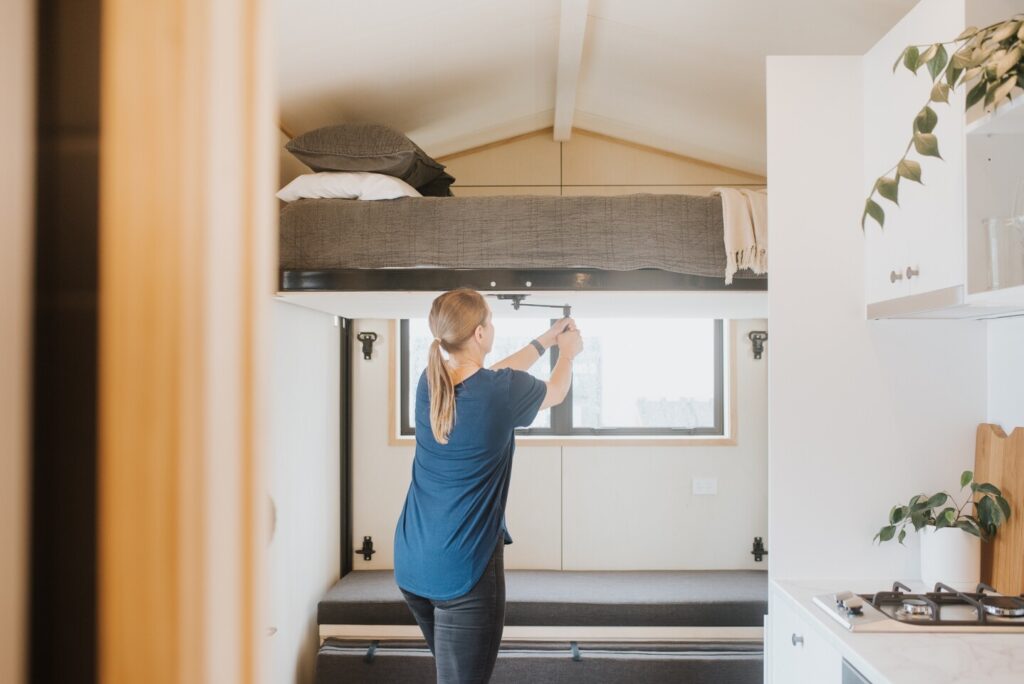
The type of glass you choose will also significantly impact your new window’s energy efficiency, natural light and airflow. According to the Ecoline Windows & Doors experts, here are some of the options you can choose from:
- Double-pane windows are the most popular and cost-effective option in Canada for tiny homes.
- Triple-pane windows offer improved energy efficiency and can be up to 15% more expensive than double-pane windows.
- Low-emissivity (LoE) coatings and filling spacers with Argon or Krypton gas can also improve energy efficiency but come at an additional cost.
Hardware and Painting
Hardware and colour schemes may seem like minor details, but they can significantly impact the final price of your window replacement project. Premium-quality handles, hinges, and locks, as well as custom colour schemes, can add to the overall cost.
Choosing the right shades for your windows is also vital to complement your tiny home’s design. While there is no one-size-fits-all answer, you can always choose a colour that complements the style of your tiny home.
- If you have The Remote Cabin-style tiny home, you might consider warmer colours like brown, beige, or gray. Brighter colours like green and blue could also work well for these homes.
- For the backyard tiny homes, neutral colours such as black, white, and gray work best, but bolder shades such as red, orange, or even yellow could provide a pop of colour and create a striking contrast against the monochromatic exterior.
- On the other hand, if your tiny home has a rustic or cottage-style exterior, you might consider a hue that mimics natural tones, such as green, brown, or blue.
When selecting the right colour for your windows, it’s essential to consider the overall look of your tiny home and the neighbourhood. While you want your home to stand out, you don’t want it to look out of place. Take the time to consider what will look best on your tiny home and choose a colour that reflects your personal style and aesthetic preferences while complementing the architecture of your home.
Number of Windows to Replace
The number of glass windows in a tiny home is much less than that of a traditional home. Therefore, replacing all of them may not be as costly, with a total bill ranging from $1,000 to $2,500.
Window Frame
Just like with regular installation, tiny homeowners can opt for different types of windows based on the frame material used:
- Wood windows. Their classic appearance is what makes these units so popular. But even though the look is superb, wood remains the most expensive frame materials out there.
- Fiberglass windows. Fiberglass is not frequently chosen material for replacement units but rather used for new construction windows. The best part about fiberglass is its durability and high energy efficiency. The cost falls into the middle range.
- Vinyl windows. These units are the most frequently used tiny house windows. They offer a middle ground for energy efficiency, look, customization and cost, being the most popular choice for small space and tight budgets.
Professional Installation
Since DIY is not an option for sush a complex renovation project as window replacement, hiring a professional installer is essential to ensure that your new windows operate correctly and provide maximum energy efficiency. Most reliable window companies include installation in their quotes, but it is essential to confirm this beforehand. Some companies may charge an extra fee for installation, leading to frustration later on.
In summary
To ensure you get the best deal on window replacement project for your tiny home, do the following step-by-step asessment of your home improvement:
- Determine your preferred window style that fits the size of your tiny home.
- Consider the size of your windows and ensure the rough opening allows for the size of the new units.
- Choose the right type of glass for your region and tiny home.
- Determine your hardware and colour preferences that complement the design of your tiny home.
- Calculate the total number of windows you need to replace, which is likely to be less than that of a typical home.
- Confirm that the installation is included in your quote and check the warranty to describe all the points explicitly.
By considering these factors, you can ensure that you get the best price from your local window replacement companies and make an informed decision about the best options for your tiny home.
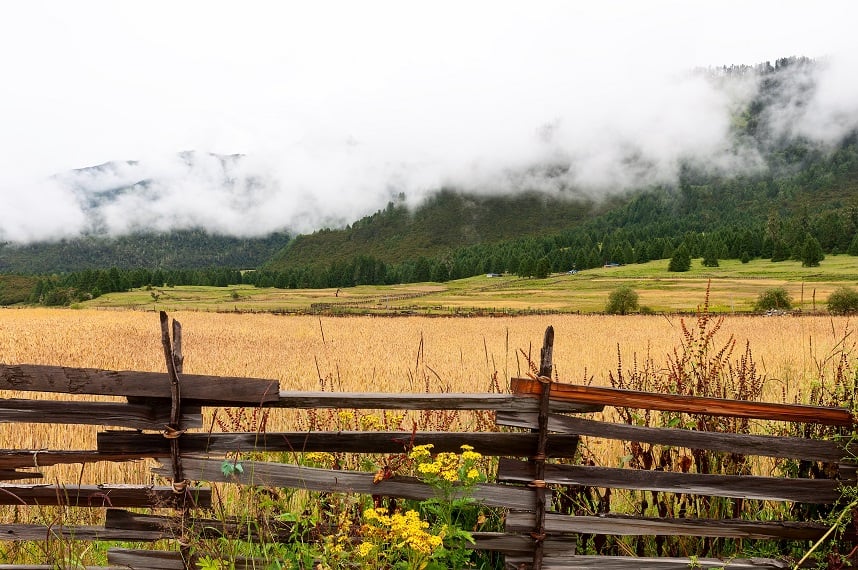
Crop Fencing 101 – Stop Pests, Save Time & Grow Better Crops!
Confused about which crop fence would be the most appropriate for your farm? Here’s what you need to know before you make a choice!
Fences play a very critical role in a farm. They not only contain the animals in their shed but also provided security to the crops from roaming animals and unwanted weeds.
If you are planning to renovate your farm and add new fences around the land, you have to make note of certain things.
Here, we have discussed the purpose of a fence, the types of fences, and some pro tips on proper installation and maintenance of the fence.
What Is Crop Fencing?
A fence is generally used to keep animals out of the agricultural land so they don’t eat away or ruin the produce. While those in Tiny homes usually don’t have the land an infrastructure to have crops, they may resort to tower gardens instead, inside or outside of their home.
It is a common practice across the globe and farmers use different kinds of materials to make the fence.
The type and material of the fence generally depend on the area’s terrain, the climatic conditions, and the animals you want to contain.
Fences are occasionally used to safeguard newly planted trees or to confine areas that need to regrow.
They also manage access for humans, wildlife, and grazing cattle and are frequently created in combination with pathways or other types of access work.
Different kinds of fences have been developed to fit certain environments and needs.
How To Plan The Fence For Your Farm?
Fencing your farm is a long-term investment and could be a bit hefty on your pockets.
However, keep in mind that it is very important to invest in a good fence especially if you have livestock on your farm.
As much as the material of the fence is important, it is equally important to plan how to choose the location of fences and properly install the fences.
If you are planning on building fences, here’s what to keep in mind:
1. Make A Map Of Your Fencing Plan
- The best way to start the fencing procedure is to make a plan and draw a rough sketch for the farm.
- Remember, you need to take into account the topographical features of the area as well.
- A thoroughly thought plan will ensure that you choose the right fence and install them accurately at the right places.
- Once you have drawn a rough plan of the area, you can divide the land into smaller units for specific purposes like area for cropping, area for permanent pastures, etc.
2. Find The Location For Lanes And Gates
- A lane is essentially used to connect different facilities and buildings of the farmland with each other as well as with fields that could be pastured in the future.
- One Pro-tip is to plan the lanes in the driest areas so that with extensive use and waterlogging, they don’t turn into gullies.
- You can either plan a permanent lane or even opt for a temporary or movable lane if you don’t have a well-drained area.
- If you use lanes very frequently and are worried about them getting spoiled, then you could grade the area and add some graveling.
- You can place the gates for the movement of the livestock and other equipment in the corner of the field so that they are close to the farm buildings.
3. Permanent Fencing
- If you are considering constructing a permanent fence for crop protection, keep in mind to use only the best and high-quality material that will last a very long time and would require very minimal maintenance.
- Permanent fencing is basically done around the whole perimeter of the land, thus drawing a designated line of the length and breadth of the farm.
- It also keeps the livestock inside and prevents them from running away and escaping the property.
- If installing a permanent field fence across the area is not feasible and you are looking for a more affordable option, then you can always fence the area that contains the livestock and leave the rest open.
- Since permanent fencing is a long-term investment, it is necessary to put some effort and build a sturdy and well-constructed fence.
4. Temporary Fencing
- If you want for a short period of time because the last one got waterlogged or maybe ruined because of heavy use.
- In any case, if you are in need of one, you can get yourself a temporary or movable fence that will do the job.
- Movable fences or temporary fences are made for the purpose to be relocated to a new location once their work is done.
- They are comparatively a lot easier to construct. You can even DIY a temporary fence, considering you have the tools and experience in the area.
- They are a lot cheaper and won’t cost you a lot, however, they do not have a very long life and will get ruined after a certain period of time.
- These fences are ideal for planned and rotational grazing scenarios, as well as separating pastures to accommodate the needs of livestock.
- They are best if you haven’t decided on the appropriate field layout and fence design, they could be used for the time being.
How To Choose The Right Crop Fence?
Before you decide on what kind of fence will be the best, make a note of the purpose of the fence. What will be the fence used for? Even though, fences are most commonly used to contain livestock and keep them away from crops.
However, different kinds of fences are required to contain different animals.
Here are some of the options you can consider:
- Cattles: If you wish to contain cows and buffaloes, you should consider woven wire or a barbed wire fence. It is the best livestock fencing option.
- Sheep: When it comes to sheep, the most important factor is to keep the predators away. Therefore, an electric wire is the best option.
- Horses and Donkeys: Thes animals prefer a lot of visibility as well as flexibility and space, or otherwise they might get cranky and hurt someone. A woven wire fencing will work best for horses’ paddocks.
- Pigs: If you know pigs, they are a bit mischievous and have a reputation for escaping from under the fence. To avoid that, use a barbed wire that is attached very close to the ground and is sturdy enough to contain the animals as well.
Types Of Fences In The Market
Now that you know the purpose of a fence and how to pick the right, here are the different types of fences that you can consider.
1. Wooden Rail Fences
- Wooden posts and rail fencing is the most common types of fencing.
- You will find wood posts around the crop fields as a border fence. It is often installed on horse farms.
2. Barbed Wire Fences
- Barbed steel wire fences are commonly used to contain cattle and pigs.
- Wires need to be fastened to any intermediate posts in a manner that they can move laterally and be re-tensioned.
- A barbed wire is basically two to three strands of barbed wire strongly twisted with each other with a couple of barbs spaced every three to five inches.
3. Woven Wire Fences
- A woven wire can be used to contain a variety of animals. Here, a web of verticle and horizontal wires intertwined like a wire gauge to keep the animals from jumping out.
- They can be adjusted at different lengths according to the jumping ability of the animals. For instance, a deer fence would be higher than one for pigs.
4. Cable Wire Fences
- Cable fences are typically used to confine animals in locations such as holding facilities, feeding heaps, and corrals.
- Cable fences are made up of 3/8-inch smooth wire cables that are strung from one anchor post to the following.
5. Mesh Wire Fences
- Mesh wire fences are durable and safe for cattle. In many regions, they are replacing the woven fence, but they are more costly than woven wire.
- Due to their high cost, they are generally utilized for confinement fences around corrals, feeding facilities, and smaller agricultural land areas. They are also effective for horses and other animals.
6. High-Tensile Wire Fences
- High-tensile fences are made of higher carbon steel wire and are regarded as one of the strongest fence alternatives on the market.
- They are one of the most expensive solutions since they need specific equipment and abilities that the majority of traditional fencers lack.
7. Electric Fences
- When correctly placed, electric fences are a reasonably affordable choice that requires low maintenance.
- When something comes into touch with this fence, it emits a small pulse of electricity, allowing your cattle to understand its boundaries. field
- You may choose between a permanent and a temporary electric fence based entirely on your demands.
What Are The Different Types Of Fencing Materials?
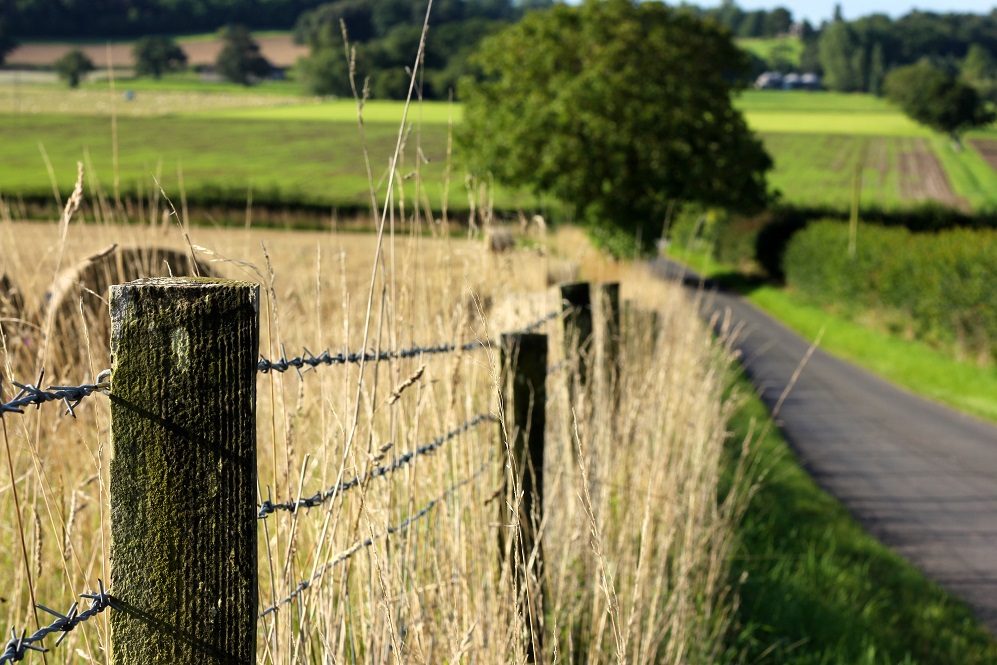
There are various alternatives to consider when selecting a fence for your property, each with pros and downsides.
Let’s look at the many types of fences so you have the knowledge you need to make the best option for your property.
Wood
- Wood is a beautiful, timeless material that complements any yard layout.
- It is also less expensive than alternatives such as vinyl privacy fences or brick fencing materials.
- Because of their durability and longevity, cedar, and redwood are popular fence materials.
Metal
- Metal fences are available in a variety of materials, including aluminum, wrought iron, and chain link fence.
- Metal, on the other hand, has a very definite design style that might or might not work in your home.
Composite
- These are comprised of wood fibers and plastic. They have the beauty of wood but the durability of plastic.
- They do not warp or decay as easily as wood and are more resistant to insects.
- The quality and pricing of different composites vary greatly, so do your homework and speak with a reliable vendor.
PVC
- PVC is an excellent choice for low-cost fence materials such as stakes, post sleeves, and pickets.
- It’s a technique to cut expenses while increasing durability because little to no wood is utilized in the construction.
Vinyl
- Vinyl fencing is the fencing industry’s biggest star. This style of fence is highly expensive, but if you can finance it, you should consider it.
- It is more flexible and stronger than wood. It’s also low-maintenance and simple to clean. It can also endure between 20 and 40 years.
Tips For Constructing A Sturdy Fence
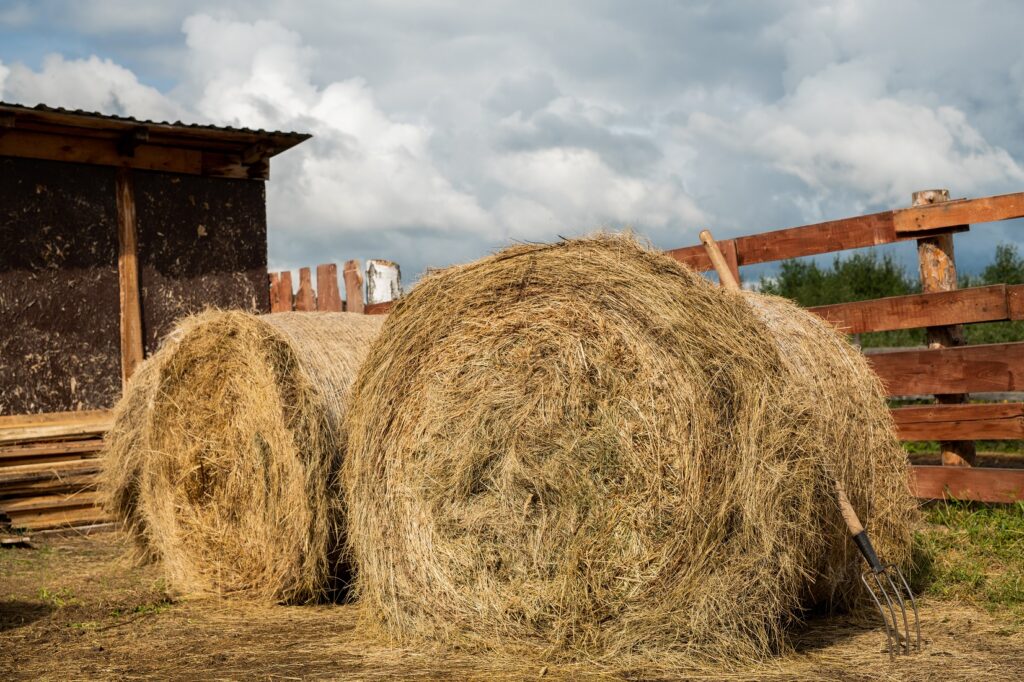
1. Purchase The Appropriate Items
Consider the function of the barrier before selecting fencing supplies. What kind of cattle will it keep? What kind of species will it keep out? The answers to these questions aid in the selection of fence materials and designs.
2. Create A Strong Brace
If bracing is designed poorly, it makes no difference how good the materials are or how well the remainder of the fence is installed. The barrier collapses if the brace fails.
3. Use Round Wood Posts Rather Than Square Wood Posts
The strength of the tree may be found in round posts with all of the growth rings intact.
Square posts are prone to rot and are weaker because they are formed of heartwood, which does not absorb treatment or only has incomplete growth rings.
4. Dig A Deep Hole
Take the time to ensure that your major straining posts are solid since not doing so will result in insufficient stress down your fence line.
They are typically excavated or pushed 1.2m into the earth.
5. Make Use Of High Tensile Strength Materials
Tensile strength extends the life of a fence and lowers the cost per foot.
The higher the tensile strength, the narrower the gauge, the lighter the weight, and the more flexible the steel, lowering the cost per roll, the danger of sag, and the number of fence posts required to finish the project.
6. Ensure That The Ratio Of T-Posts Is Correct
For every four T-posts, use one round wood post.
7. Posts Should Be Appropriately Spaced
The distance between posts varies according to stocking density, geography, and fence type.
Every drop and rise, however, necessitates a post. Fastening high areas first helps achieve enough tension easily.
8. Don’t Ever Hard-Staple The Wire
Give the wire enough space between the staple and the post to allow for movement.
This lessens the chance of sagging and puts weight on the brace rather than the post when an animal pushes against the fence, allowing the wire to bend if necessary.
FAQs: Crop Fencing
1. What is the cheapest farm fencing?
Hi-tensile wire fencing is the cheapest form of fence to install and is long-lasting, heavy-duty, and sturdy.
When constructing a wire fence of this type, it is critical to use fencing staples to ensure that it will survive for up to 50 years.
2. What fencing can I put on agricultural land?
Solar fence for agricultural land is used to safeguard crops and property on agricultural land.
It works as a physical barrier against animals, robbers, and other strange factors.
3. What type of fence is best for a farm?
Fences typically used on farms include barbed wire or woven wire.
The type of fence required is determined by the cattle, crops, and other plants that border the fence.
4. What is the purpose of fencing a farm?
Fencing is used to enclose a farm in order to differentiate the limits and to protect trees from roaming animals, among other things.
It is also used in open yards to keep animals contained.
5. What are the benefits of using farm fencing?
Fences keep pests like rabbits away from crops. In the winter, they supply snow-prone locations and isolate sick or sickly animals.
Areas that are hazardous to livestock are segregated. Plantations, natural shrubs, shelter belts, and streams are all included under the protection.
So, Which Fence Is The Best One For You?
There are many options to choose from. However, it is up to you and your specific needs and requirements that will help you decide on the right one.
The kind of livestock you have, the purpose of the fence, and other factors like your budget and fence maintenance requirements, all are necessary to be considered before you make up your mind.
So, now that you know everything about crop fencing, don’t wait any longer and start planning your fence!
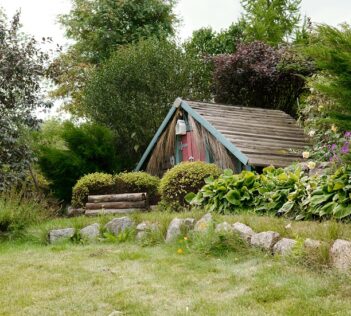
Tiny Home Landscaping Ideas In 2023 – Big Style In Small Space!
If you reside in a tiny house and want to park it somewhere semi-permanently, it’s only natural that you’d want to make it look attractive, pleasant, and homely.
As housing costs and the environmental effect of typical dwellings continue to climb, an increasing number of individuals are exploring alternate housing solutions. The small house is one such possibility.
Living in a tiny house has several advantages, including lower expenses, better sustainability, and the freedom to live a simpler lifestyle.
Tight quarters and downsizing your belongings are only two of the difficulties that come with compact living.
Why Go For A Tiny House?
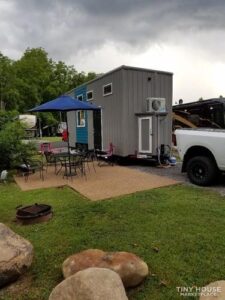
Tiny houses living to offer multiple benefits to the owner, be it saving money on housekeeping or being on the road and gaining experiences that will last their whole life.
Some of the benefits that come with living in a tiny house are:
1. Low Mortgage Debt: A tiny house can help the owner to avoid paying the high mortgage debt and financing that comes with a traditional house and rather put that money into saving.
2. Low Maintenance: A tiny house does not require a lot of money for its upkeep and maintenance. Thus, owners can take a small job or a part-time job that covers their daily household expenses and spend the rest of their time doing what they love.
3. More Freedom: Since tiny house owners save time by working less, they can spend their free time traveling with family, exploring the cities, or perhaps getting back to nature.
4. Sustainable lifestyle: A tiny house generates less waste, and limits the consumption habits of the owners, thus having a positive impact on the surrounding. To further that sustainability, you can consider trying tower gardens to grow your food. They require way less resources to grow a plentiful harvest.
5. Unique interior design: You can DIY your tiny house in a unique way. Infinity is the limit when it comes to designing the structure.
What is Tiny House Landscaping?
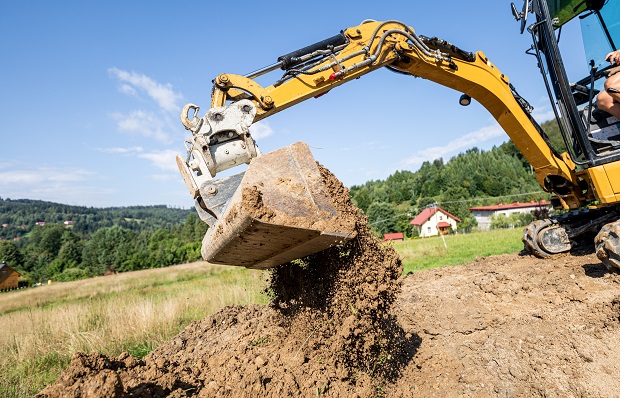
Living in tiny houses is not a new phenomenon, people across the globe have been appreciating the idea of living in smaller places and in a more sustainable way for a long time now.
Tiny house landscaping simply means making the best of the limited space available so that you don’t have to give up on any of the key necessities.
Gardening in a little garden for a tiny house might be difficult. You may, however, design a lovely and useful environment with a little imagination and forethought.
7 Tiny House Landscaping Ideas and Tips
If you want to park your small house for a long duration, the space surrounding your home is of utmost importance.
Since living in a tiny house means you’ll be spending most of your time outside, it is essential to choose a location that is safe and clean.
By choosing a proper location, you will get some extra outdoor living space and proximity to shops and grocery stores as well.
Here are some tips on how to make the best out of the outdoor space for your tiny house:
1. Use Vertical Space
- You may not have enough floor room, but your small home has lots of wall space, and you can simply build a vertical garden.
- Attaching a trellis to a wall provides adequate room to grow crops such as green beans, spinach, peas, and any wildflowers that climb the wall.
- You may also use pallets as benches for your herb garden or a small garden.
2. Try Container Gardening
- Containers are an amazing concept for compact houses, and if you don’t know how to garden, this is a perfect place to learn.
- There are many plants that thrive in small pots, and one of the nicest things about them is that they are portable.
- A container garden may provide you with enough food, herbs, and flowers to make your house more welcoming.
3. Check Out Some Hanging Pots
- Hanging pots are another wonderful landscaping concept for compact houses and folks who are just getting started with landscaping.
- All you have to do is hang growing plants in hanging pots on hooks placed in strategic locations throughout your little house.
- You are also welcome to hang some in your home and grow some herbs or indoor plants.
4. Go for a Layered Landscape
- Creating layered landscaping is one of the simplest tiny house landscaping ideas for compact quarters.
- In a layered garden bed, groundcovers and ferns are followed by shrubs, then small trees, and lastly big trees.
- You may also optimize your garden area by using root plants like carrots or bulbs like onions to make a stunning yard and add dimension to an awning.
- You can also make compost out of garden waste and thus reduce the organic waste generated from your house.
5. Use Window Boxes
- Window boxes might be your buddy if you don’t know how to plant since your outside area is tiny.
- They are an excellent way to add character to your little house while also providing space to produce some gorgeous flowers or vegetables.
- You may add color to your house by growing various sorts of flowers in small spaces, and if you have to travel, you can still bring some veggies with you.
6. Use Artificial Grass
- You may use fake grass if one of your main motivations for living small is to avoid the extensive care that comes with owning a home and a home garden.
- If you don’t plan to stay there long, this is a great idea because you can just roll up the grass and carry it with you.
- The pleasure of having lush, evergreen grass that you don’t have to water or maintain will be yours, and your house will look stunning as a result.
7. Install A Fire Pit
- If you enjoy entertaining friends and family, a fire pit is an excellent addition to a landscape design.
- A little house may not be the best venue to entertain visitors, but that doesn’t mean you shouldn’t invite them.
- A patio fireplace or fire pit will not only offer your outside space a high-end and minimalist appeal but will also serve as an entertainment area.
FAQs: Tiny House Landscaping
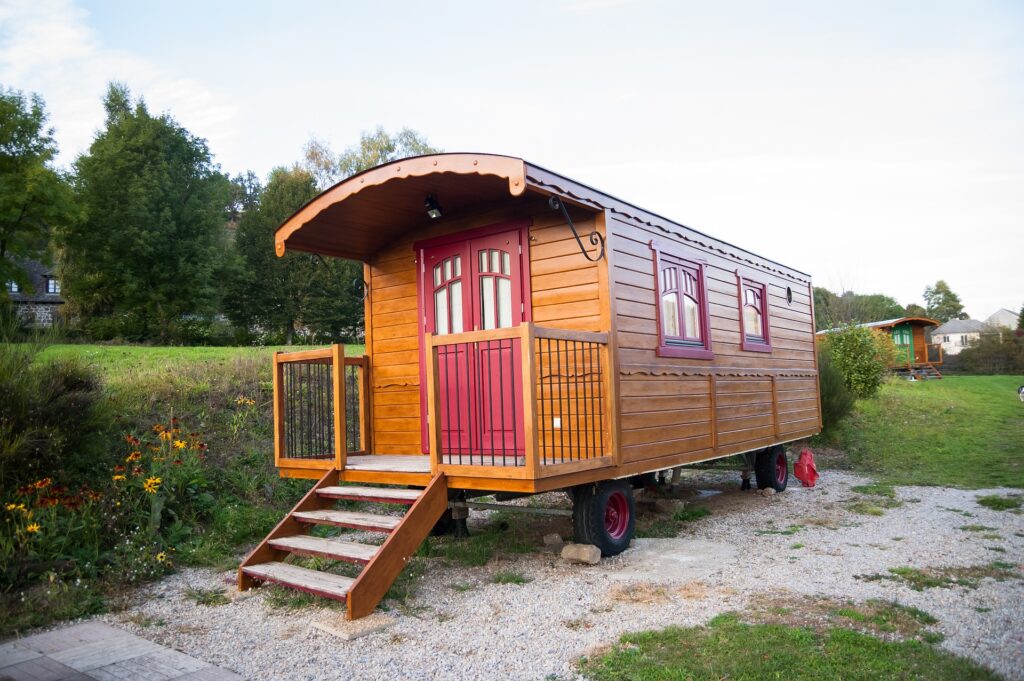
1. What are the common features of tiny homes?
A typical compact house layout includes an open living room on the first floor with a kitchen and bath, as well as an overhead sleeping area.
Some compact residences include many bedrooms and bathrooms, while others simply include a sleeping chamber and a bathroom.
2. What are the 3 reasons people buy a tiny house?
This one-of-a-kind conscious-living lifestyle has numerous long-term benefits for both homeowners and the larger community.
Tiny houses are less costly to create and maintain, offer mobility when placed on trailers and have a lower environmental effect. Thus it is one of the ways to have sustainable living.
3. Can you permanently live in a tiny home?
Yes, you can live in a little house in California forever. Many individuals are doing this, and small home communities are sprouting up all across the state.
However, there are a few things to keep in mind if you’re considering making this a permanent change like making sure that you are not encroaching on private property, etc.
4. What is the lifespan of a tiny house?
Your mobile tiny home may survive for more than 30 years if properly maintained.
A tiny house is a long-lasting, low-cost dwelling alternative that can last a lifetime.
5. How much does it cost to build a 1000-square-foot tiny house?
While the price of a small house can vary depending on its size, on average you can expect to pay roughly $150 per square foot.
Keep in mind that this price just covers the building; it does not include any additional items or land.
Joining The Tiny House Movement?
We have all witnessed the tiny house movement on social media platforms. everyone is running to get their hands on a tiny house and travel.
A tiny house gives you the responsibility of being a house owner as well as the freedom to make life choices as per your wishes.
With all the options to choose from, we are sure that there is something for everyone!
So, is it something you’ll get into? If your answer is YES, then don’t wait anymore and start planning right away!

Buy a Home Without Breaking the Bank in Ohio
Aside from being a big fan of the Buckeyes football team, there are plenty of reasons to move to Ohio.
With the average price of a home in Ohio rising to nearly $274,000 as of July 2022, it is becoming very difficult to purchase a home without breaking the bank. Fortunately, there are some tips and tricks to help you get the best deal possible when buying a home in Ohio.
In this blog post, we will break down how to buy a home in Ohio without breaking the bank.
What you should know before buying a home in Ohio

Before you start looking for a house in Ohio, there are a couple of things that you should look into. Here are some things to keep in mind when buying a home in Ohio –
- Property taxes in Ohio vary greatly depending on the county and the location of the home.
- You will need to pay for an inspection and appraisal when purchasing a home.
- It is important to consider both current and future costs associated with home ownership, such as homeowners insurance, repairs, and utilities.
- You will also need to factor in closing costs when budgeting for your home purchase.
- You should also be aware that certain neighborhoods may be subject to local zoning regulations or homeowner association (HOA) rules.
- Ohio has a variety of financing options. These include conventional mortgages, FHA loans, and VA loans.
- You should compare the rates carefully to make sure you are getting the best deal on a mortgage loan.
In November 2022, Ohio’s average price for a home increased by 3.8% over the previous year. Perhaps, you can take a look at the following graph for a better insight –
Ohio house marketing overview
Buy a Home in Ohio on the Cheap: Tips and Tricks

Do you find it hard to buy a home in Ohio at a cheap price? Yes, that might happen since the home value in Ohio is increasing. But you can still get affordable offers if you follow the tips and tricks below –
1) Decide where you want to live in Ohio
Whether you get a cheap house in Ohio or not will very much depend on the location where you want to live. Ohio has a lot of different cities, suburbs, and rural areas. Therefore, research and weigh your options carefully before making a decision.
Here are some facts about choosing the location –
- Decide whether the location suits your lifestyle. You may look for an urban area with plenty of nightlife, or you may prefer a quieter atmosphere.
- Think about your budget. Although some parts of Ohio are more expensive than others, there are always less expensive options.
- Research the amenities of the particular location. Check if public transportation or good schools are nearby.
2) Do your research
Now, you must do your research when it comes to buying a house in Ohio. Depending on the current market conditions and available areas, you should conduct your research. Local newspapers, real estate listings, and websites for information about homes for sale may help you with the research.
You should also consider factors like the crime rate, public transportation, and the overall cost of living. As a result, you should inspect different neighborhoods to find the best and cheapest home in Ohio.
3) Get pre-approved for a loan
Before you start looking for a home in Ohio, you should look into getting pre-approved for a loan. This will not only give you an idea of the type of loan you qualify for but also how much you can spend. You can contact several different lenders and negotiate the terms before committing to any loan.
When applying for a loan, you will need to provide documents, such as your credit report, proof of income, bank statements, and any other information that the lender may require. The lender will review these documents to determine if you meet their qualifications. Then, he will let you know if you are pre-approved or not.
If possible, get pre-approved for a loan from a local bank. That way, you will have better rates and terms than a national bank. A local bank is more familiar with the area. So, they can offer more options.
4) Use an experienced real estate agent
Finding a qualified and experienced real estate agent is crucial when buying a home in Ohio. Here are a few reasons why contacting a skilled real estate agent is important to get a home at a cheap price in Ohio –
- An experienced realtor has strong knowledge of the local market.
- He can help you find homes that meet your needs and budget.
- He knows prices are realistic for specific homes in Ohio or any estate.
- He can offer relevant information about a specific property.
- He can make you aware of the local zoning laws and regulations.
- From his experience, he might have strong connections with other agents and lenders.
Living in a suburb in Ohio can be a great experience. Your lifestyle may blend with the environment of the community. Currently, Miamisburg can be a popular place to find community houses. The right real estate agent can help you find such a house at an affordable price.
How can you find a good real estate agent? Well, you can ask a couple of questions regarding his experience, fees, and other relevant information. Also, make sure he has his real estate agent license and good references.
5) Look for houses and make an offer
After getting a professional real estate agent, you should start looking for houses that meet your criteria. You can browse online real estate websites or work with an experienced real estate agent to help you find the right fit.
While looking for a cheap home in Ohio, you should keep an eye out for good deals. At the same time, don’t stop searching for houses that are in your price range. When you find a house that fits all of your requirements, it is time to make an offer.
You should consult your real estate agent or a lawyer at this stage since they can help you negotiate a fair deal. You should compare the current market values of nearby properties. This will make you confident enough to make a competitive offer. Confirm the reason for any closing costs. Additionally, do an inspection for renovations that may need to be done.
6) Consider a fixer-upper
You can consider purchasing a fixer-upper if you are looking for a more affordable option to buy a property in Ohio. Fixer-uppers are homes requiring significant repairs and renovations to become livable. While they may come with a lower price tag than other homes, they need more time and effort. However, the potential cost savings make them worth the investment.
When it comes to financing a fixer-upper, there are several loan options available. Many banks offer FHA 203k loans, which provide money for both the house and repairs. With this loan type, you can finance renovations up to $35,000 with less money down.
Another option is to get a Fannie Mae HomeStyle Renovation Loan. This loan allows you to borrow up to 75% of the home’s future value after repairs. Therefore, you can get financing for larger projects. However, you may need to make a down payment of 20%.
It is very important to do your research before you buy a fixer-upper. Check out the property’s history and get an inspection done before you commit. Once you have done your due diligence, you can start planning and budgeting for the renovations.
7) Get a home inspection and appraisal
Getting a home inspection and appraisal is an important part of the process when buying a house in Ohio. This will provide information about the condition of the house so that you can make an informed decision about whether to buy it or not.
An appraisal will give you an idea of the fair market value of a specific home in Ohio. The appraiser will compare your chosen home to similar homes in Ohio to determine its value. Therefore, you don’t have to pay more than the house is worth.
Your house in Ohio should be structurally sound without any major issues. As a result, you should get a home inspection before signing any contracts. If the inspector finds anything wrong, you may be able to negotiate with the seller to have them fix it before you complete the purchase.
Buying a house in Ohio can be a daunting task, especially with the high cost of living in the state. However, with the above tips and tricks, you can find an affordable home without breaking the bank. All you need is the right approach to avoid overspending on a home in Ohio.